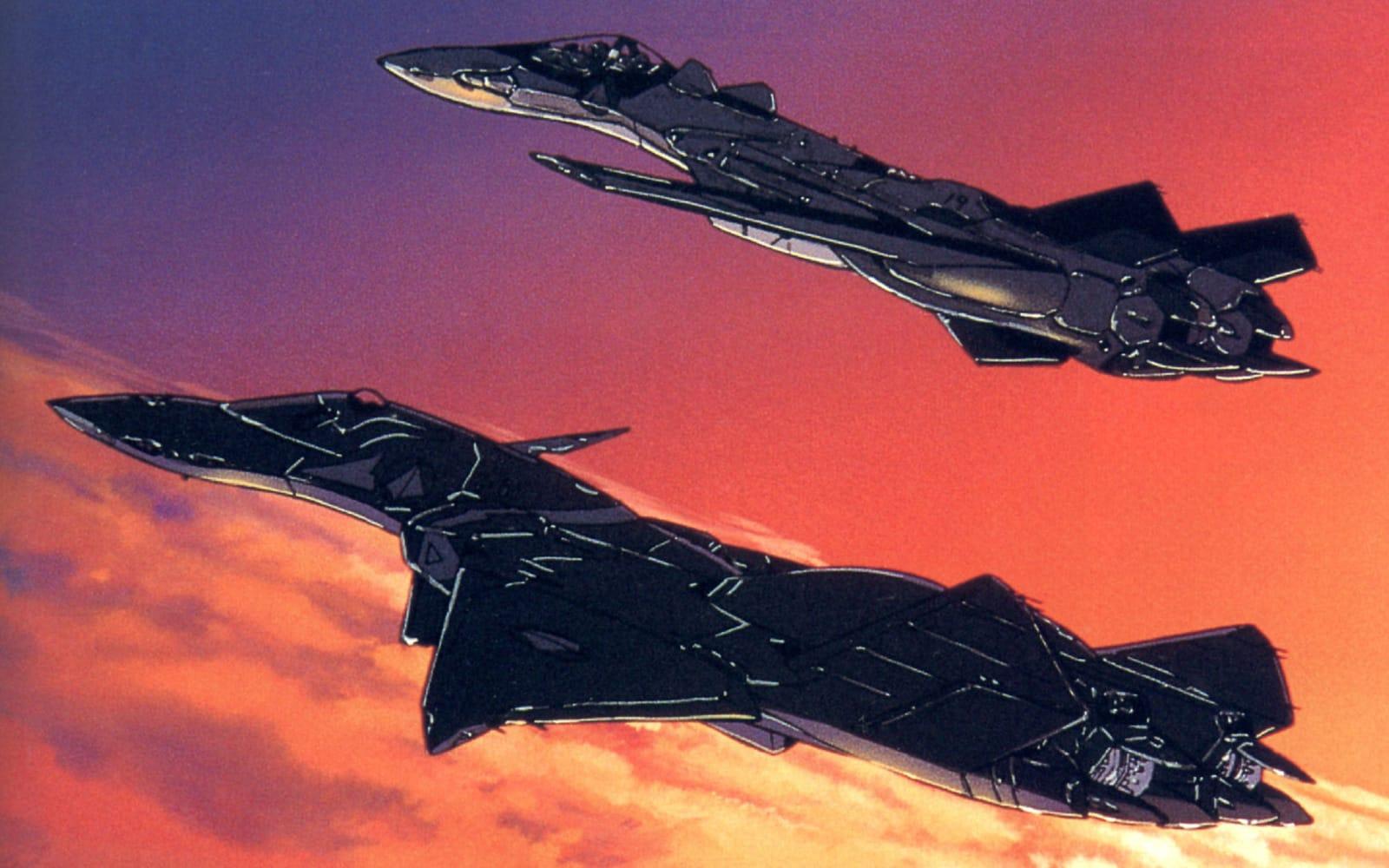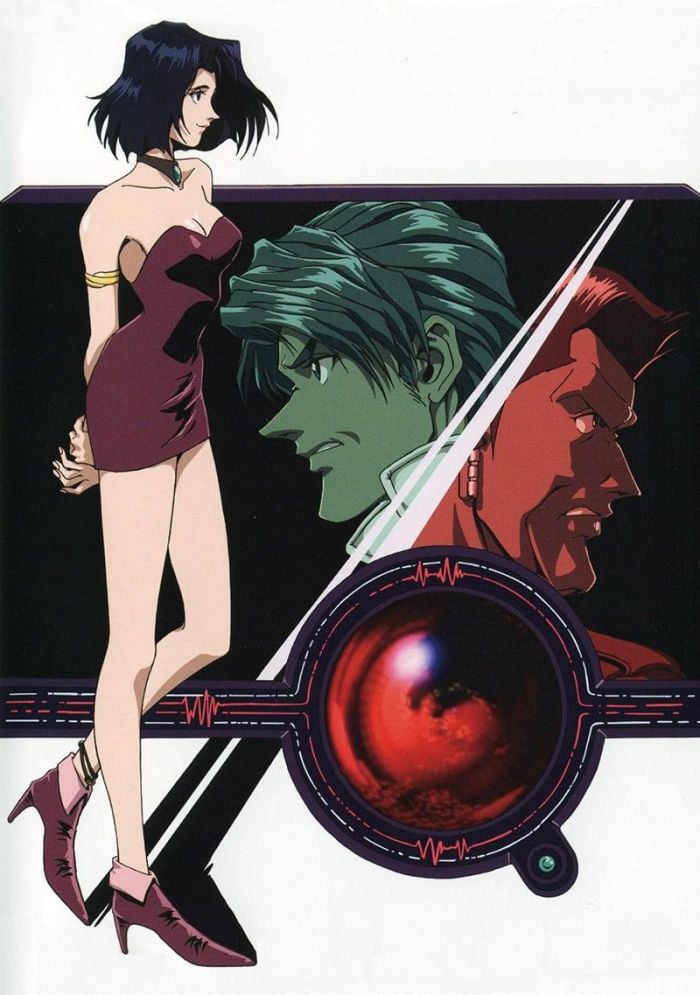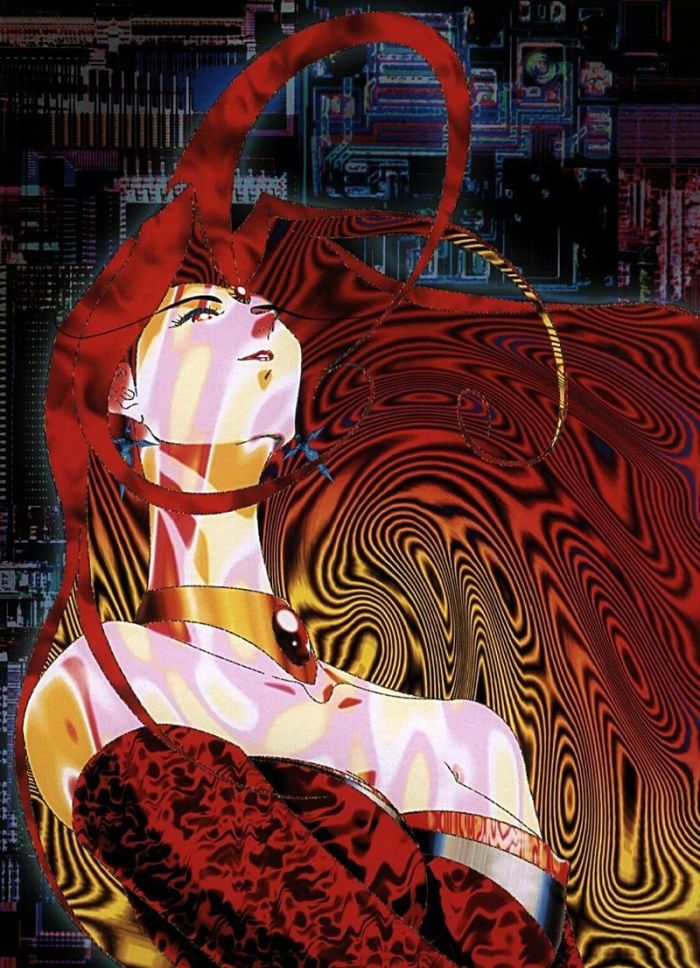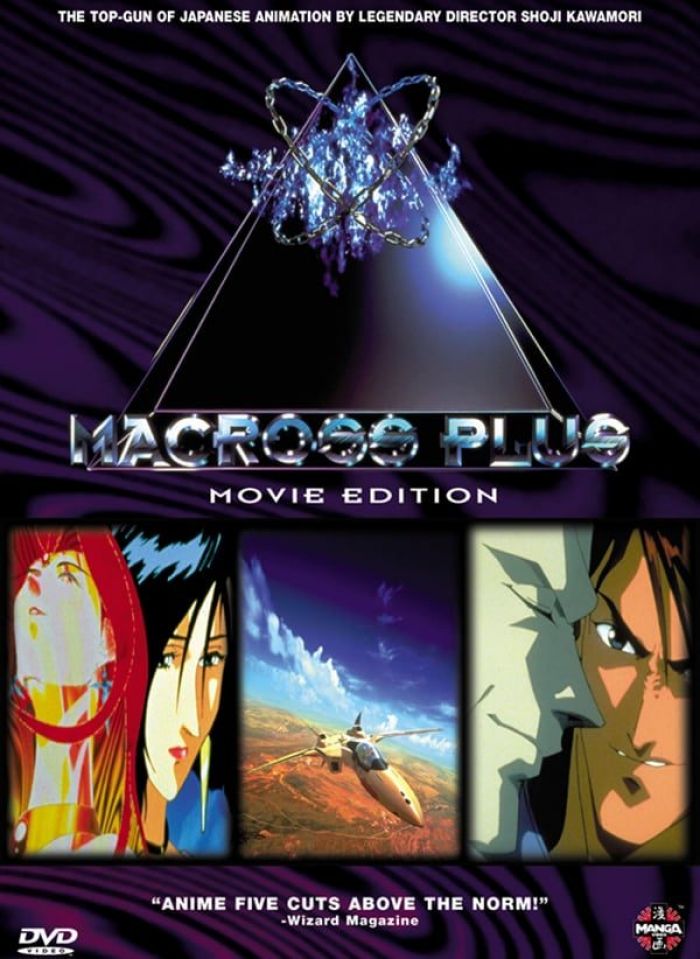Macross Plus at 25: Revisiting & Reevaluating an Anime Classic

Macross Plus has long been one of my favorite anime titles. To mark the 25th anniversary of the release of Macross Plus: The Movie, I’m revisiting the classic mecha anime to see if, and how well, it holds up in 2020.
When it was released in 1992, Macross II came with a considerable amount of hype, seeing as it was a follow-up to the original Macross series (which served as the basis for Robotech here in the States). While it did well commercially, Macross II failed to capture fans to the same extent as its predecessor. There are several reasons for this, but it probably didn’t help that Macross creator Shōji Kawamori wasn’t involved in its production.
Kawamori and his cohorts at Studio Nue had originally grown tired of producing Macross anime, but something about Macross II convinced them to return to the franchise. After retconning Macross II into a “parallel world” continuity alongside 1984’s Macross: Do You Remember Love?, Kawamori and Studio Nue set out to make a proper sequel to the original Macross series. The result of their efforts was Macross Plus.
The original Macross was a space opera that found humanity picking up the pieces after a giant alien spaceship crashed on Earth in the year 1999. After mastering the strange alien technology found inside the ship, humanity came under attack by the ship’s original owners, a race of warriors named the Zentradi, leading to a war that spanned the solar system.
Macross Plus, on the other hand, is much smaller in scale, with a greater focus on personal drama and broken characters — though with plenty of transforming mecha action mixed in. And of course, because this is a Macross title we’re talking about, Macross Plus features a romantic triangle. A deeply dysfunctional romantic triangle, mind you, but a romantic triangle nevertheless.
Note: The following contains potential spoilers for Macross Plus.

It’s the year 2040 and on the planet Eden, the military’s Project Super Nova is testing and evaluating the next generation of their transforming Valkyrie fighter aircraft (or Veritechs, as they were called in Robotech). But for the two test pilots involved in the competition — cocky, hot-headed Isamu Alva Dyson and stoic, calculating Guld Goa Bowman — their rivalry runs deeper than simply proving who has the better fighter.
Once inseparable, their friendship was shattered years ago by a tragic event involving their mutual friend, a young woman named Myung Fang Lone. Jealous of Myung and Isamu’s burgeoning romance, Guld flew into a rage that unlocked his Zentradi warrior nature. In his fit, Guld assaulted Myung — an event so shameful that he repressed his memories of it even as it drove a wedge between the three of them.
When Myung returns to Eden to promote a concert for the AI singing star Sharon Apple, the three former friends are forced to finally confront the pain in their past. Meanwhile, forces are at work that could jeopardize Project Super Nova and permanently end Isamu and Guld’s flying careers.
When I first watched Macross Plus years ago, I found the drama between Isamu, Guld, and Myung compelling, even moving. Rewatching it now, though, I find it more disturbing and troubling. Macross Plus treats Myung less as a character in her own right, and more like a trophy for the two rival pilots to fight over. Which is unfortunate because Myung arguably has the trio’s most tragic story.
No doubt traumatized by Guld’s assault and the loss of her friends, Myung abandoned her own promising singing career to become Sharon Apple’s “manager.” The reality, though, is that Myung actually provides Sharon Apple with the emotions that make the virtual singer’s concerts so vivid and affecting — something unbeknownst to Sharon Apple’s countless fans. Beneath her posturing, Myung is little more than a shell of her former self, her voice, emotions, and even agency sacrificed in service of a hologram.

But Myung’s trauma always seems to take a backseat to Isamu’s antics and Guld’s machinations. The notion that the two pilots are in some way vying for the affections of poor Myung, or that we’re to expect Myung to ultimately choose one of them, gets increasingly gross as Macross Plus proceeds.
Macross Plus clearly wants Isamu to be the hero and attempts to give him some depth and raffish likability towards the end — attempts that ultimately feel like too little, too late. Guld’s faults, beginning with his assault of Myung, are obvious, but he’s ultimately a more complex and interesting character than Isamu. His treatment of Myung as a prize in his competition with Isamu is certainly problematic, but there’s also a tragic aspect to it given that his behavior stems from his own repressed shame and memories.
There are moments when the character drama works, when the characters’ pain and awkwardness becomes believable and affecting. Not surprisingly, these are often the quieter moments when the characters let down their guard and we glimpse the underlying wounds and how they’ve been dealt with (or not). But by the time Isamu, Guld, and Myung achieve some measure of healing and resolution at the end of Macross Plus, it feels a bit unsatisfying given all of the antics, cruelty, and reckless destruction that comes beforehand.
Furthermore, the subplot involving Sharon Apple gaining sentience and falling in love with Isamu and Guld — in other words, expressing the conflicting emotions that Myung has kept repressed for years — is pretty goofy and underwhelming when all is said and done. At best, it does seem like Kawamori et al. were aiming for something along the lines of Ghost in the Shell’s contemplations concerning artificial intelligence; there’s even a short philosophical discussion that namedrops Aristotle.
But regardless, Sharon Apple never really works as the title’s “big bad.” When she finally captures Myung and reveals her plans for Isamu and Guld — and by extension, humanity as a whole — it feels far less dramatic and villainous than it ought to given the stakes at play.

Although the character drama hasn’t aged too well in the last 25 years, Macross Plus’ visuals and animation are still as stunning and amazing as ever, thanks to the direction of Kawamori and co-director Shinichirō Watanabe (of Cowboy Bebop and Kids on the Slope fame). Indeed, I feel quite comfortable stating that Macross Plus contains some of the finest animation of any ’90s anime, period. And at the risk of showing my age, I daresay that it’s more vivid and interesting — from the character and vehicle designs to the hand-drawn cel animation — than a lot of modern anime, as well.
(It’s worth noting that Macross Plus features computer-generated imagery that was considered groundbreaking at the time. But since it was primarily used to accent the cel animation, it doesn’t look nearly as dated or out of place as its 25 years of age might otherwise suggest.)
There are, of course, several flight and combat sequences in which Isamu and Guld push their respective fighters to their limits. For fans of mecha anime, these sequences are pure gold, and even feature several glorious examples of the “Itano Circus.” (In order to ensure these sequences’ realism and intensity, Kawamori and several others traveled to Edwards Air Force Base for research and even participated in fake dogfighting sessions.)
But where Macross Plus really sets the bar, visually, is during Sharon Apple’s concert on Eden, which becomes a barrage of psychedelic imagery set to a variety of musical styles, from pulse-pounding electronica to dreampop.

Yoko Kanno wrote most of the music for Macross Plus. Not only is it some of her finest work, but her songs are the title’s secret weapon; they enhance every single scene in which they appear. A gentle, jazzy piano ballad underscores the awkwardness of Guld and Myung’s reunion while a twang-y guitar perfectly captures and conveys Isamu’s recklessness. As for Sharon Apple, she gets some awesome jams, including the hypnotic and otherworldly “Santi-U” and the elegant trip-hop of “Pulse.”
Macross Plus’ signature song is a haunting and sparse ballad titled “Voices” that features an arresting vocal performance by Akino Arai. But the highlight for me has long been “Information High,” a soaring techno piece by producer CMJK that’s augmented by Melodie Sexton’s soulful voice.

“Information High” plays when Isamu attempts to enter Earth’s atmosphere in his stolen fighter even as Sharon Apple begins to enchant and take over the planet. As you can see in the video above, the scene is already insane, visually speaking, as Isamu’s helpless fighter is threatened by orbital bombardments and burning debris — and “Information High” just takes it to a whole new level.

Macross Plus was released as a 4-episode OVA between August 25, 1994 and and June 25, 1995. Two months after the final episode’s release, on August 27, Macross Plus was re-released as a feature-length film. The film contained multiple edits and cut several scenes altogether while adding some new footage. (Note: Macross Plus had originally been envisioned as a film by writer Keiko Nobumoto before it became an OVA.)
While both versions have their merits, I prefer the movie version because it makes Isamu and Guld a bit more sympathetic. Isamu is given a scene or two that helps counterbalance his recklessness and we see fewer machinations by Guld to win Project Super Nova. And perhaps most importantly, Guld’s death — he sacrifices himself to take out an AI-controlled fighter that’s under Sharon Apple’s control so that Isamu can rescue Myung — is far more climactic and emotionally impacting in the movie than the OVA.
However, the OVA does a better job of fleshing out several subplots, specifically Sharon Apple’s growing intelligence and the government’s secret program to develop a new AI fighter that’ll render Project Super Nova and pilots like Isamu and Guld irrelevant. While these subplots exist in the movie and come to a head in its final act, they’re better set up in the OVA (e.g., the appearance of the aforementioned AI-controlled fighter makes more sense in the OVA than the movie).

Macross Plus was the last Macross title to become legally distributed here in the States. Due to ongoing legal issues between the American-based distributor Harmony Gold and the relevant Japanese studios (Big West, Studio Nue, and Tatsunoko Productions), no subsequent Macross titles (e.g., Macross 7, Macross Frontier) have been officially released on this side of the Pacific to date.
As a result, Macross Plus is an interesting time capsule for American anime fans as well as a capstone of sorts for the whole franchise. Which is something of a mixed bag.
I can respect the fact that Macross Plus tried to do something different than practically every other entry in the Macross franchise, from exchanging the “big robots battling in space” aspect for more character-based melodrama to inverting the “idol singer” theme that’s so central to Macross. And I can respect the fact that Kawamori, Nobumoto, et al., tried to make a more mature and emotionally complex Macross title even if the final storyline fluctuates between disturbing (the relational dynamics of the central protagonists) and ridiculous (the Sharon Apple subplot).
But even with those flaws, Macross Plus remains a must-see title for those who want to experience the best of “classic” ’90s anime. Even if you’re not a mecha anime fan — and if you aren’t, then why are you even reading Opus in the first place? — the quality and intensity of Macross Plus’ aerial action sequences is impressive, coming as it did before computer animation became as widespread as it is today. Furthermore, it’s worth seeing to experience the pairing of its visuals with Yoko Kanno’s wonderful music. As a technical achievement, Macross Plus can still dazzle and thrill, even after nearly three decades.
More Macross Plus-related notes, thoughts, and observations:
Aviation buffs will note similarities between Project Super Nova and the Air Force’s “Advanced Tactical Fighter” program from the ’80s and early ’90s. Kawamori’s design of Guld’s YF-21 was even inspired by Northrop’s YF-23 prototype, which ultimately lost to Lockheed Martin’s F-22 Raptor.
As an Aphex Twin fan, it’s nice to know that Richard D. James will still be releasing music in the year 2040. I can only imagine how bonkers Selected Ambient Works Volume 23 might sound.
Several models and kits were released to capitalize on Macross Plus, including some awesome-looking — and fully transformable — 1/60 scale models of the YF-19 and YF-21. Several years ago, my family spent a few weeks in Japan, which included a visit to Tokyo’s Akihabara district. One of my great regrets from that trip was not picking up some of those Macross Plus models when I found them for relatively cheap.
Yoko Kanno’s score was performed by the Israel Philharmonic Orchestra and Czech Philharmonic Orchestra. Macross Plus was one of the first anime titles that Kanno composed for. Prior to that, she’d primarily worked in video games and pop music. She has since become one of anime’s most celebrated and versatile composers, having worked on Cowboy Bebop, Darker than Black, Ghost in the Shell: Stand Alone Complex, and Kids on the Slope (to name a few).
In addition to his design work on the Macross franchise and other anime titles (e.g., Eureka Seven, Ghost in the Shell, the Patlabor movies), Shōji Kawamori also designed the Thunderbird Shadow aircraft — which has a definite Valkyrie-esque look to it — that appears in Thunderbirds Are Go.
Following Macross Plus, Keiko Nobumoto worked on several other high profile anime, including Cowboy Bebop, Tokyo Godfathers, and Carole & Tuesday. She also wrote a Macross Plus novel that was published in 1996 (see some illustrations here). The novel serves as a prequel, with an emphasis on the main characters’ youth as well as Sharon Apple’s development and how Myung’s music was instrumental to her “birth.” The novel features some more mystical elements as well as a subplot about a non-anime character named Gren who starts out as a man but eventually transforms into a woman due to a strange space disease. Apparently, a second novel covering the anime’s events was planned but never written.
Where to watch: Macross Plus is currently not streaming on any of the major services like Netflix or Hulu. It’s available on DVD from places like Amazon, but can be expensive. Also, some of the copies listed on Amazon are imported foreign versions, so they may not be compatible with your player. DVD copies are also available on eBay, but those can be pretty pricey, too. Given the convoluted legal issues surrounding the Macross franchise, it seems unlikely that Macross Plus will get a newer, wider release any time soon, but one can always hope.